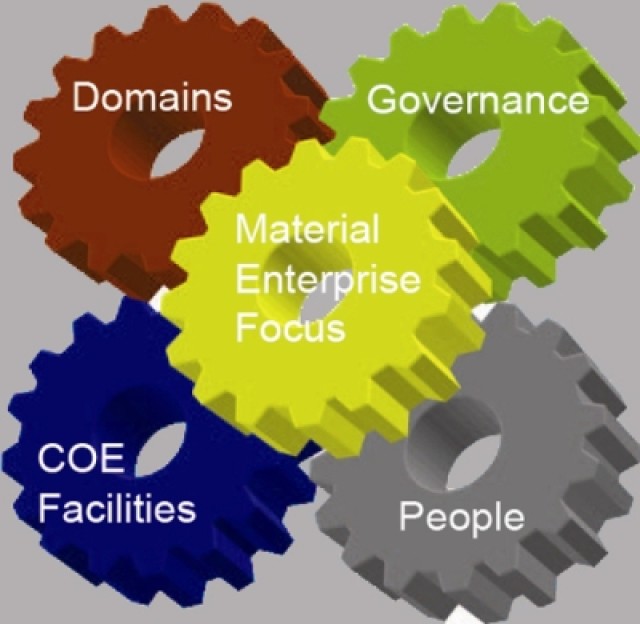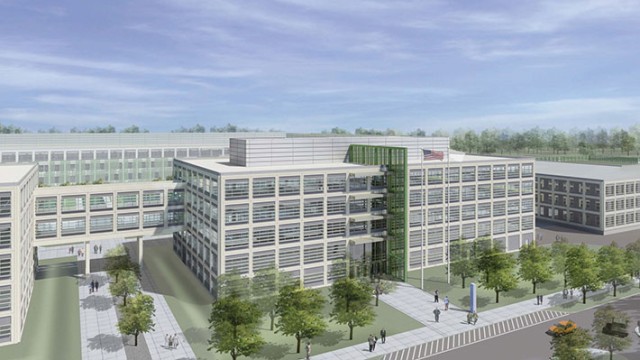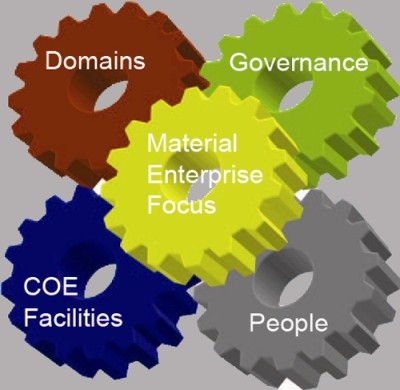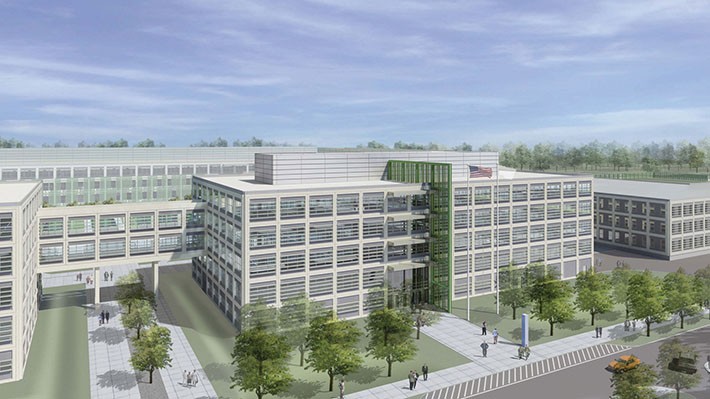FORT MONMOUTH, N.J. -- In describing the Army's future direction, Col. Scot MacKenzie evokes an image of a mechanic who would like to be in the same room with engineers when they're designing a car.
"Why do they have to put that oil filter all the way back there' '' MacKenzie imagines the mechanic saying. The colonel reflects on how the mechanic can make quicker repairs if he has a chance to speak to engineers when the car design is still on the drawing boards.
Using that example, MacKenzie pivots to discuss how early collaboration and open communications can be applied in a military context.
When a system is in the early stages in research and development--and the initial design is coming together--early feedback from various participants can yield efficiencies in cost and time.
"Someone may say, 'Hey, you may want to go this route because long term that will be easier and cheaper to sustain.' Does he tell them they have to do that' No, but he offers his perspective."
Closer and earlier collaboration bears fruit in many areas beyond sustainment and builds upon the various processes and efforts that already exist.
"We're doing a lot of good things now," MacKenzie said. "We're getting a lot of the players together earlier in the development cycle."
MacKenzie, former Director of the Command Initiatives Group for the CECOM Life Cycle Management Command, said an Army culture of improved teamwork will be fundamental to achieving the most sweeping changes in the Army since the early years of World War II.
The drive for greater collaboration and communication among disparate components is not only an Army-wide imperative, but it is also the underpinning for the new Center of Excellence under construction at Aberdeen Proving Ground (APG), Md.
According to the Army Campaign Plan, a Center of Excellence is "a premier organization that creates the highest standards of achievement in an assigned sphere of expertise by generating synergy through effective and efficient combination and integration of functions while reinforcing unique requirements and capabilities."
The Center of Excellence at Aberdeen will be the new home to Army Team C4ISR (Command, Control. Communications, Computers, Intelligence, Surveillance and Reconnaissance).
Army Team C4ISR manages a total of 104 major defense programs amounting to more than $32 billion in total obligation authority to acquire, field, sustain and provide new equipment training on C4ISR systems. It is also responsible for almost 56,000 inventoried items--half the Army's inventory--including more than 6,000 major end items.
Because various organizations are responsible for different aspects of the entire life cycle of a system--from concept to combat--a culture of close-knit collaboration not only provides timely support to the Warfighter but uses taxpayer dollars as efficiently as possible.
"We're hoping that at the technical level and the program level that we will make smarter choices even though different people have responsibilities to execute separate portions of the life cycle," MacKenzie said.
A confluence of events has given impetus to the Army's push to transform itself to handle current and future demands:
-- Army leaders describe the Army as "out of balance" after seven years of continuous combat that represents the third-longest war in the nation's history and the longest ever fought by an All-Volunteer Force.
-- The global security environment is more ambiguous and the next several decades are likely to be characterized by persistent conflict, from peacekeeping to counterinsurgency to major combat.
-- The current state of the nation's economy is ushering in an atmosphere of heightened scrutiny of how federal resources are used and prioritized.
MacKenzie said cost-consciousness is part of the "stewardship" principle of the "Enterprise" approach that the Army is adopting as part of its transformation.
"It's absolutely necessary that we become better stewards," he said. "That's not to say that we haven't been good stewards. We just need to be better, the Army is saying, and I think it's prudent for us to do that."
A key catalyst for Army Team C4ISR to be rooted in a Center of Excellence is the 2011 closure of Fort Monmouth and the relocation of C4ISR organizations as part of the implementation of the 2005 Base Realignment and Closure (BRAC) law.
With the bulk of C4ISR operations to be transferred to a compact campus at Aberdeen--compared to a sprawling, scattered assemblage of buildings at Fort Monmouth--Army Team C4ISR leaders see an opportunity to leverage that proximity of personnel as one of the foundations for a new Center of Excellence.
"Early on, it was recognized that the move down to Aberdeen was an opportunity to take a look at how the command does business and see if there aren't some better ways to organize ourselves as a result of the move to gain some advantages and some synergies," said Michael Vetter, CECOM Life Cycle Management Command, director (G4), Logistics and Engineering.
Along with a new, $800 million campus, the proposed Center of Excellence will have at its core 13 unique but interrelated "mission domains" that are expected to facilitate heightened communication, collaboration, transparency and synergy across the C4ISR community.
Each of the mission domains provides traditional program-management functions as well as R&D technology development and sustainment functions. The composition of each domain will vary, based on requirements of the program managers.
The domains include areas such as command and control systems, navigation, force protection and survivability, night vision and fabrication.
The foundation for these mission domains are the Army Enterprise principles of communications, collaboration, transparency, stewardship and trust.
As a way to provide guidance and focus for the various domains, a three-tiered operations and governance model will serve as the capstone for the Center of Excellence concept. This model includes Technical, Program and Leadership Executive boards, also referred to as forums, which are intended to provide the structure for collaboration across the full life-cycle of C4ISR activities.
The combination of mission domains, an Army Enterprise focus, proximity of C4ISR personnel at Aberdeen and new employees with fresh perspectives will be the elements that will forge the Center of Excellence.
"These are the parts we hope are all meshing together," said MacKenzie. "They're all major dynamics."
Supporting the Warfighter efficiently and effectively is ultimately at the center of the Army's push to transform itself and foster an Enterprise approach, which manifests itself in a Center of Excellence.
"You can deliver the best equipment, but if you deliver it at the wrong time you're not maximizing its potential,''MacKenzie said. "And if units miss the training on the equipment, they'll have to figure it out in theater.
The current and future demands on the Army to prepare for and execute a full spectrum of operations over the coming decades serve as a stimulus for a quickened pace of transformation.
"Post 9/11, the operations-tempo has been unbelievable in the Army," MacKenzie said. "The funding has been there to enable all that op-tempo.
"But now we are entering a period where we see restrained resources coming. Is the op-tempo going to slow down' It will be reduced some, but it will be steady.
"This is an era of heightened efficiency. So we have to collaborate a little better to do what we do better and more effectively."
(This article appeared in Spectra, the magazine of the CECOM Life Cycle Management Command. To access the full issue in PDF format, 3.2 megabytes, click on the link appearing in the "Related Links" box at the start of the article.)




Social Sharing